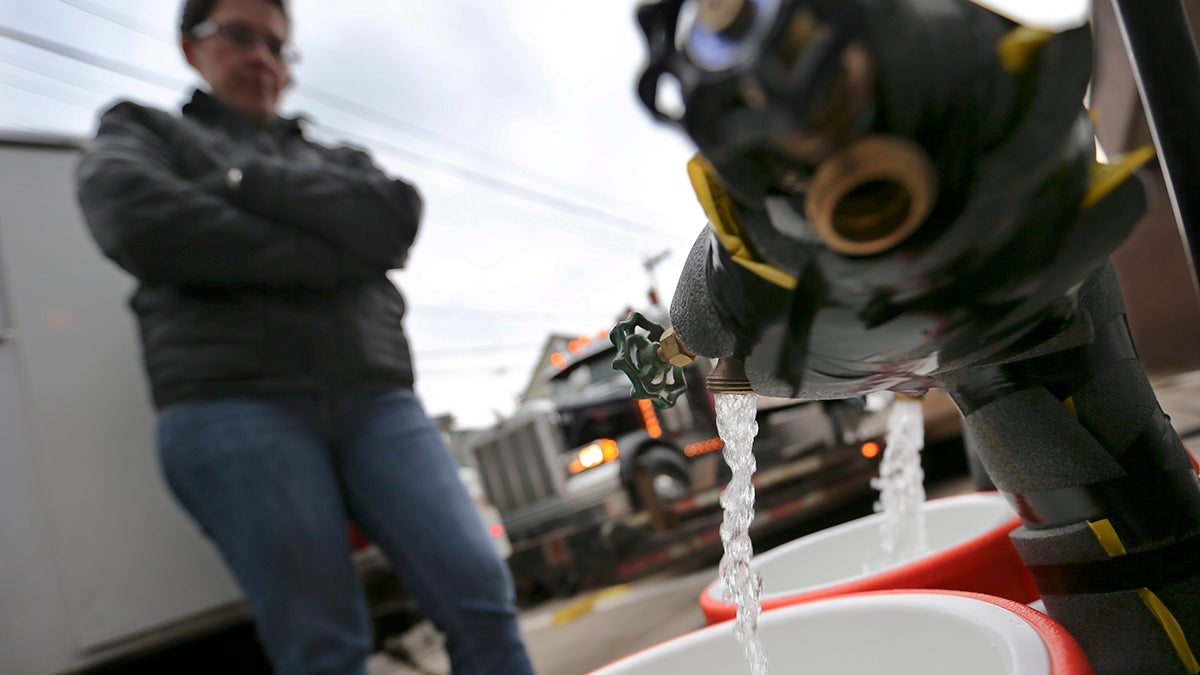Pa. water systems will fail. All systems do.

Ronette Cooley fills water containers at a fire station in Pittsburgh's Lawrenceville neighborhood. The City of Pittsburgh set up 15 water stations across the city to provide residents under a flush and boil advisory with potable water. Lower than normal levels of chlorine were found at a city reservoir that supplies water to much of the central and eastern parts of the city. (AP Photo/Keith Srakocic)
A water advisory in Pittsburgh raises questions about the state’s aging water infrastructure.
The Pittsburgh Water and Sewer Authority issued an advisory to nearly 100,000 city residents to boil water before using it. While PWSA found no contaminants, lower than normal levels of disinfection were found at a reservoir supplying much of the central and eastern parts of the city.
The Highland Park Reservoir water is treated with microfiltration, but an additional chlorine treatment ensures redundancy, making sure all pathogens have been removed. Lower than normal levels of chlorine triggered the advisory.
PWSA Director Bernard Lindstrom said in a press conference Wednesday that those low levels of chlorine could be due to one of three things: operator error, when an employee took a manual reading with a handheld chlorine monitor; a malfunctioning handheld chlorine monitor; or a problem with the microfiltration plant.
Lindstrom emphasized that the advisory was made “out of an abundance of caution.”
Across the commonwealth there are more than 8,000 water systems, and any number of things could create an advisory like the one in Pittsburgh, said Department of Environmental Protection press secretary Neil Shader.
“It’s mostly a precaution. Even if you don’t have solid evidence that there is some sort of microbial contaminant, if you don’t have solid evidence there isn’t, we take extra precaution.”
In its 2014 Report Card for Pennsylvania’s infrastructure, the American Society of Civil Engineers nearly flunked the commonwealth: drinking water systems earned a “D,” waste water systems earned a “D-”.
Greg Scott is a senior engineer with Buchart Horn, a firm based in York, Pennsylvania. He worked on the waste water portion of the 2014 report. He said there’s a tendency to react to failure, but instead, system managers should plan on it.
“It will fail, at some point in time. There will be a problem. There will be a cost that comes out of that. So the discussion needs to be, how do I minimize my cost? How do I invest wisely?”
Scott said when it comes to infrastructure, that means considering the life cycle of a system, and not just the problem at hand. When repairs are made, managers can choose more durable materials: it might cost more upfront, but will ultimately mean less disruption.
Scott is concerned about continued budget cuts at the Department of Environmental Protection. Without sufficient funds and staffing, he said companies won’t be able to get the permits they need to update systems.
DEP press secretary Shader said the funding issue has been troubling.
“We’ve lost positions fairly consistently over the past decade. It does start to take a toll on how effectively we can do our jobs.”
The American Society of Civil Engineers estimates $28 billion is needed to bring them up to speed.
WHYY is your source for fact-based, in-depth journalism and information. As a nonprofit organization, we rely on financial support from readers like you. Please give today.


